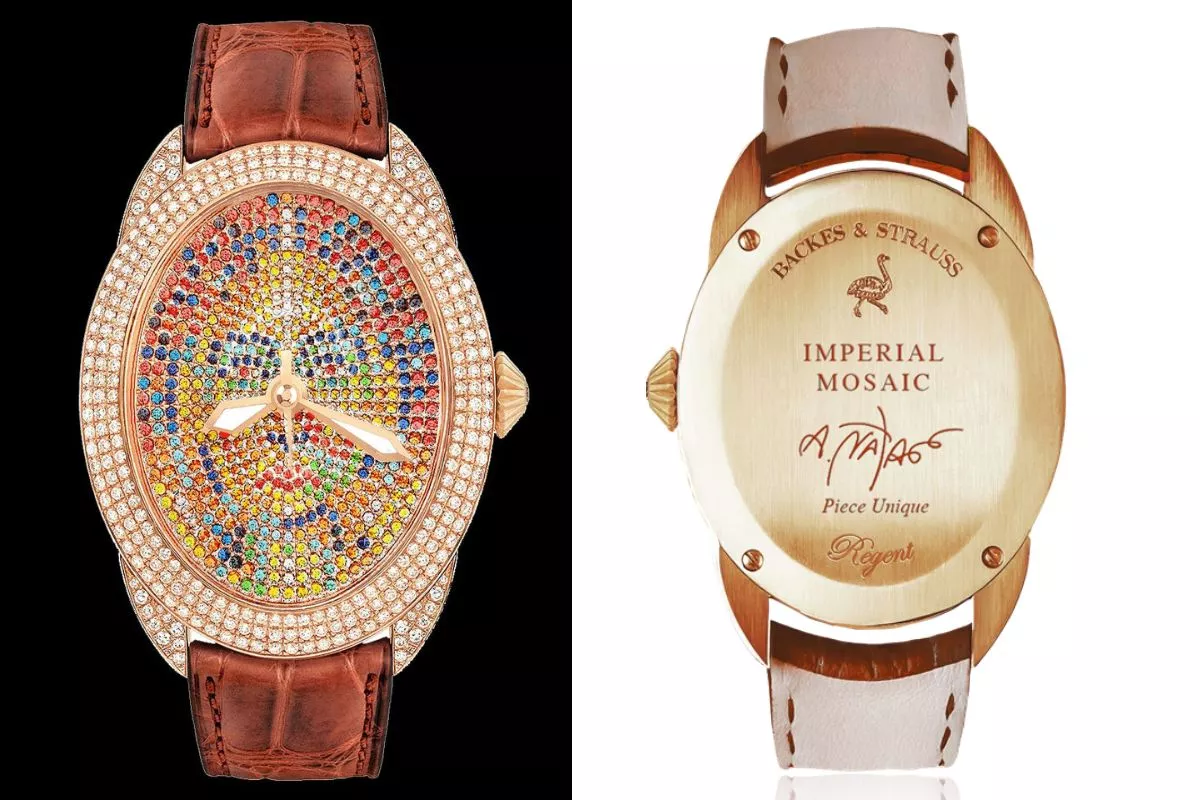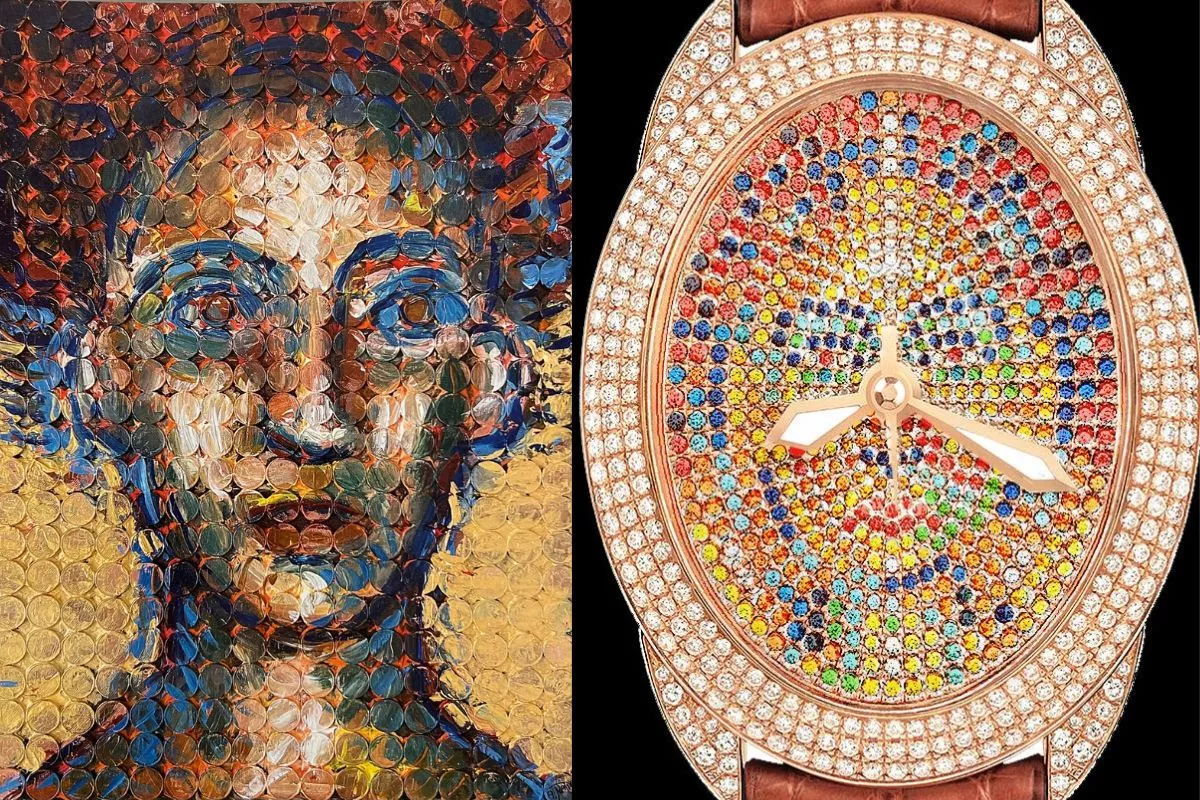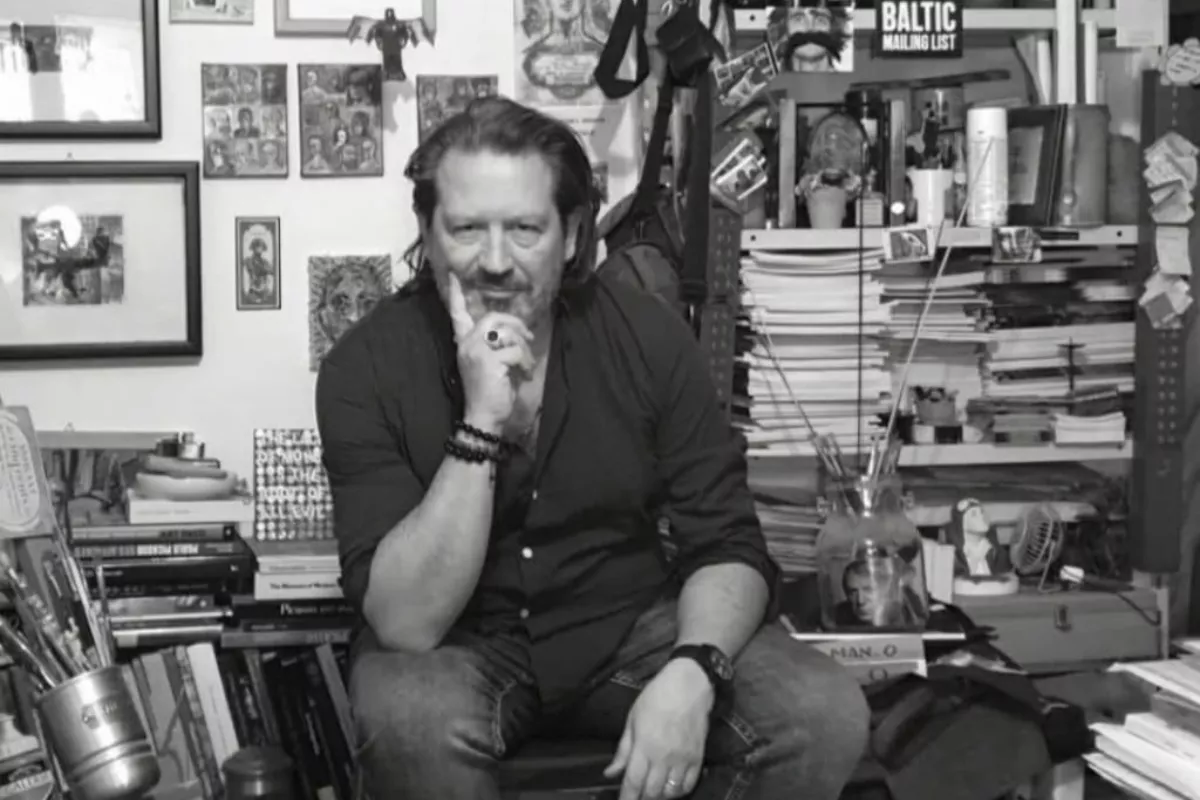On a spring evening in 1997, Antonio Natale picked up an old Italian lira note. Scrawled across it was a phone number and a message; evidence of a life lived, a story passed from hand to hand. In that moment, the artist had an epiphany: if a simple message could travel the world on currency, why not art?
Twenty-eight years later, that question has led to something extraordinary: a watch adorned with 1,182 hand-set gemstones, sold alongside the original painting that inspired it. This is the Imperial Mosaic, where three masters of their crafts have created something truly unique.
The Imperial Mosaic Watch represents an unprecedented collaboration between Antonio Natale, known since 1997 for painting on banknotes, Backes & Strauss, the world’s oldest diamond house (founded in 1789), and the Swiss watchmakers at Franck Muller Watchland. It’s the first time an artist, jeweller, and horologist have combined their talents into a single piece.
“I’m not interested in challenge,” Natale tells Monaco Life. “I’m interested in curiosity. Curiosity is what drives every artist forward. It’s what stops us from standing still.”
That curiosity has taken him far from his roots in southern Italy, where he began drawing before he could write. At 18, he left for Rome’s Academy of Fine Arts, then travelled Europe, absorbing influences from Greek mythology to Nordic expressionism.

The Man Made of Cents
The watch’s design stems from Natale’s 2020 painting, Homo Decent N.7, a provocative work created from 408 original euro cents. The title is a clever play on words: we evolved from Homo sapiens, Natale argues, but we’ve become “Homo of Cents”: humans defined by our obsession with money.
“Every single person wakes up each day thinking about money,” he explains. “We can’t escape this whirlwind. We were once great conquerors, architects, cultural giants. Now? We sacrifice authenticity, quality, and creativity for wealth.”
The painting, inspired by Byzantine mosaics, features a haunting three-dimensional face. As you move past it, the nose appears to extend from the canvas. From a distance, the mouth looks open, revealing teeth…but step closer and you’ll see it’s actually closed. Even the artwork is full of illusions.

A Trilogy of Art
Translating this vision onto a 44×52mm watch dial required painstaking precision. Working with Backes & Strauss CEO Vartkess Knadjian, Natale selected 584 stones for the dial alone: 95 rubies, 108 orange sapphires, blue and yellow sapphires, and black and white diamonds, each just 1.1 or 1.2 millimetres in size. The 18-karat rose gold case holds another 508 diamonds.
“When Vartkess and I met to discuss the concept, the synergy was transformative,” Natale recalls. “It felt truly magical.”
But what makes this truly unique is that the buyer doesn’t just get a watch. They receive the original Homo Decent N.7 painting, plus a custom art-watch box hand-painted by Natale himself, topped with another of his coin artworks. Three interconnected pieces of art, all stemming from the same vision.
“When you wear the watch, the original artwork waits for you at home,” Natale says, his enthusiasm transferable. “Like a parent waiting for you to return. It’s your guardian angel that follows you.”
For Natale, his work isn’t just mere decoration. In 2019, he collaborated with the European Parliament and UNESCO on an exhibition titled ‘Stories of Roses, Butterflies and Silence’, giving voice to victims of violence against women.
“I don’t create decoration,” he insists. “There’s always something important behind the work. I try to show people what we’ve really become. To make them reflect.”
This philosophy extends to his artistic evolution, which he summarises as “the four Ms”: Mythology (his early academic studies), Metropolis (confronting his fears in 1980s Rome), Maps (drawing on geographical charts instead of keeping diaries), and finally Money—the medium that has defined his career since that pivotal lira note in 1997.
When asked what happens when cash disappears in our increasingly digital age, he’s adamant: “I don’t believe we’ll go completely digital. We were born with cash. It can never die.” But if it does? “I’ll paint on credit cards. Visa, American Express, whatever exists. Everything that represents money is now part of my philosophy.”
The Artist as Witness
Natale grows reflective about what it means to create art in turbulent times. He recalls artists in Zürich during the First World War, and the expressionists during the Second, all creative voices bearing witness when the world burned.
“Being an artist in certain periods of history has never been easy,” he says. “Right now, I feel responsible for the moment we’re living through. The artist becomes the witness to our existence. History can lie, but a true artist always tells the truth…even if it means going against themselves.”
Beyond the gemstones and craftsmanship, the Imperial Mosaic carries something more valuable: a message about what we’ve become, and what we’ve lost in our relentless pursuit of wealth. Natale has already painted on banknotes, cars, and bonds. Major exhibitions are also planned for 2026 in Guangzhou, China, and Santa Cruz, Bolivia. There may be eyewear collaborations, more watches, other brands seeking his distinctive vision.
But at its heart, his art poses a simple question: if we’re all Homo Decents now – humans made of cents – what would it take to become human again
Stay updated with Monaco Life: sign up for our free newsletter, catch our podcast on Spotify, and follow us across Facebook, Instagram, LinkedIn, and Tik Tok.
Main photo provided by Antonio Natale
